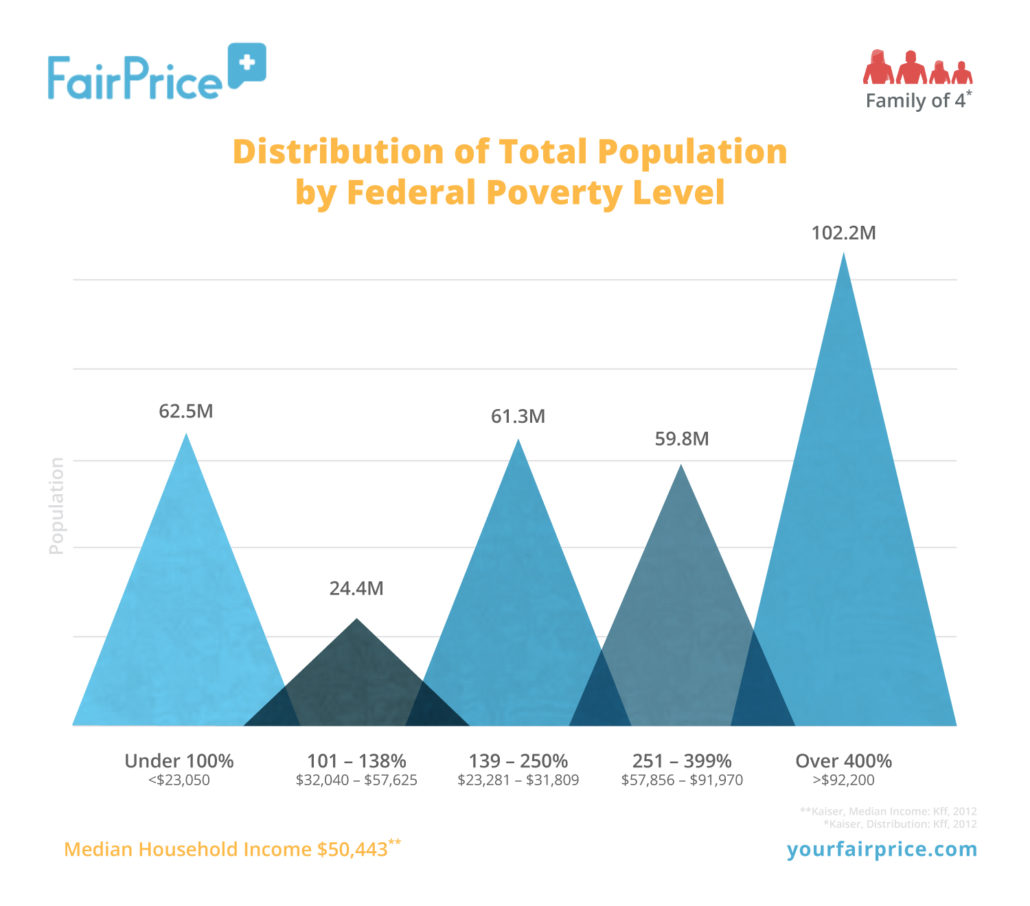Healthcare costs across America have become exorbitant. In some cases, a simple Aspirin can end up costing the person taking it as much as $400. Epipens—vital medication for individuals with allergies—cost $57 in 2007; now, a single pen costs $600 or more. The House of Representatives report on the top 10 generic drugs from 2013 to 2014 saw increases between 420% to 8,000%—in one single year!
How Are Your Employees and Your Company Dealing with Rising Healthcare Costs?
Many Americans find that the rising cost of healthcare destroys home budgets. The rising cost of healthcare also increases stress levels.
Want to save 30% on your healthcare?
Download our brochure to see:
How American insurance is broken
Who FairPrice Is
How we can help
Healthcare debt causes over 60% of the bankruptcies in America.
“89.62% of health benefit brokers are concerned with the rise in healthcare costs” – A recent Paylocity survey notes.
Payroll professionals and human resource departments are finding with the rise of the Affordable Care Act, costs are rising even higher. In 2015 alone, 82% of participants found that the ACA had already raised their care costs. It’s obvious that many Americans are struggling with the weight of rising care costs.
Reference-based pricing (RBP) can provide the solution.
RBP provides fair medical pricing. This fair pricing makes it easier to discern the price of medical services. Under reference based pricing, insurance companies, medical providers and patients all win.
Is America’s Healthcare Sustainable?
If healthcare prices continue to rise consistently with the past three years—at an average rate of 6.1% per year—many American households will find themselves in a terrifying position.
By 2019, the average premium for American families will be approximately $24,180. At an 8.7% increase—the average number seen over the past 10 years—the average family premium could be as high as $30,803. For many families, this simply isn’t a sustainable rate!
Take a look at the cost to income chart below. Note that as many as 87 million people live in households that make less than the projected cost of health insurance by 2019.
Median Household Income $50,443 (Kaiser, Median Income: Kff, 2012)
Simply put, many Americans, by 2019, will not be able to afford the basic cost of insurance. Americans will also not be able to afford the high payments associated with medical care. Healthcare prices have doubled every ten years since 1965; America’s income hasn’t increased along with it.
Fairness: A Basic Human Right
Fairness in America is considered to be a basic human right. Unfortunately, when price discrimination comes into play in the healthcare system, it’s not fair for anyone. In America, prices are raised for a specific demographic while lower-priced alternatives are available to other populations.
How Reference-Based Pricing helps America’s Healthcare Discrepancies
With Reference-Based Pricing, you are put back in charge of your healthcare and the money you spend on healthcare. Suddenly, it becomes a sustainable proposition again—and many Americans will, for the first time in years, be able to afford the cost of sufficient care.


